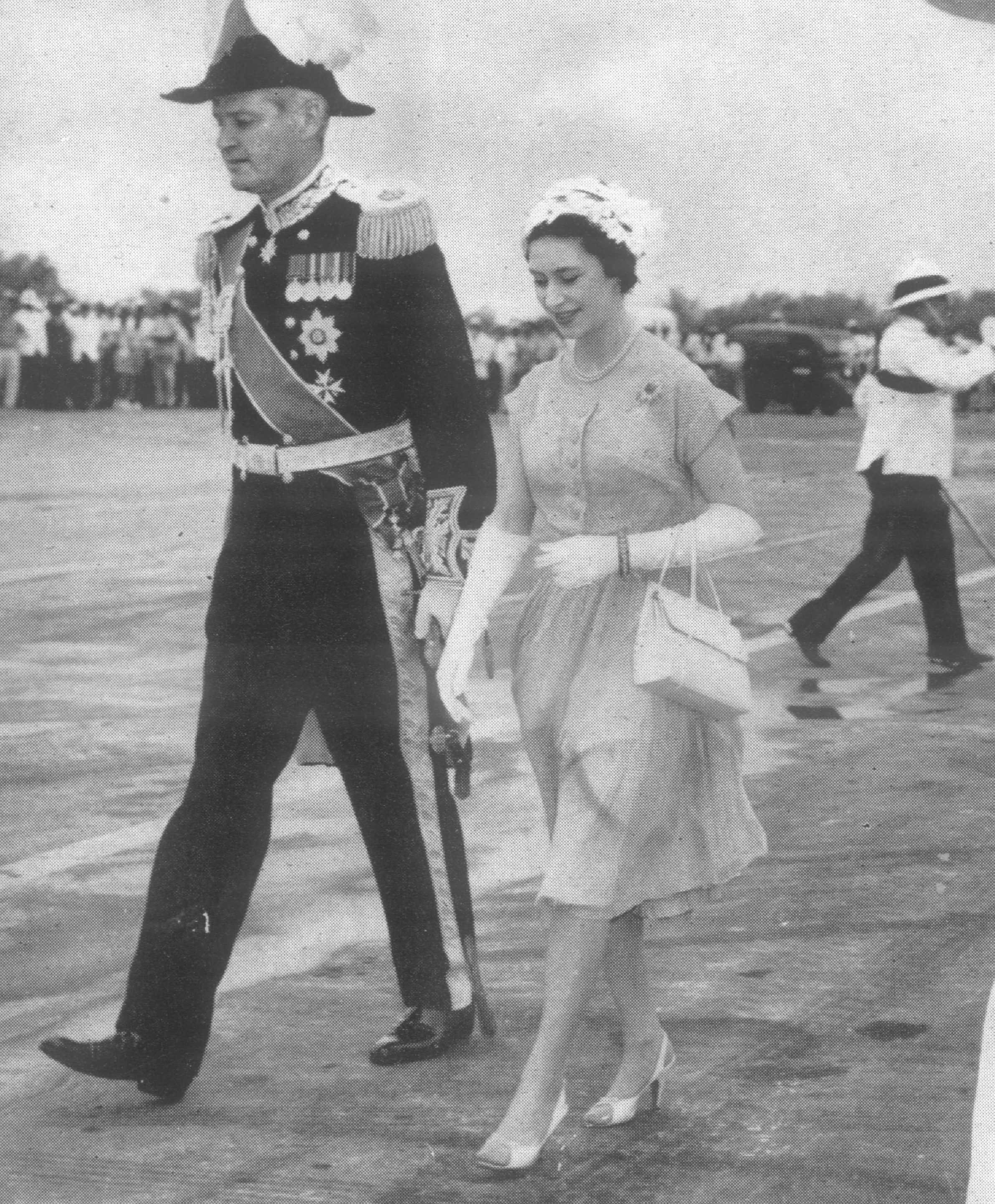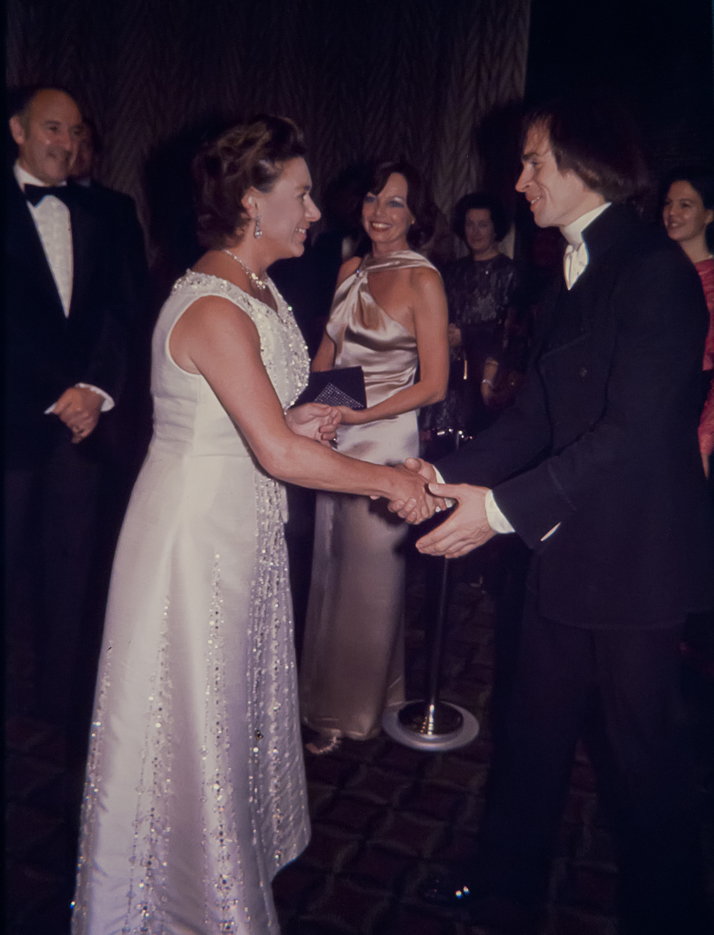When we think of royal fashion icons in the 21st century, the British will probably think of two people: Diana, Princess of Wales, and The Duchess of Cambridge. If we think further afield, we might include other Royals, such as Queen Letizia of Spain, Queen Maxima of the Netherlands or Queen Rania of Jordan. However, that list is missing one very important figure: Princess Margaret, Countess of Snowdon.
Margaret is perhaps lesser known in today’s society; many royal fans became interested in the British Monarchy recently, due to the influence of Diana or Catherine, and missed the heyday of the ultimate royal socialite. While The Queen has always dressed appropriately for her role, Margaret’s fashion was much more lavish. As the younger sister of The Queen, she had connections within the fashion world, a breathtaking collection of jewels and, most importantly, occasions on which to wear ballgowns and tiaras.
Over the years, Margaret wore some iconic outfits: her 21st birthday dress, designed by the one and only Christian Dior, characterised the New Look movement for which Dior become famous – shorter lengths, with voluminous skirts and relatively daring necklines, all of which emphasised the tiny waist of the woman. After the years of war rationing and frugality, dresses were decadent, with layers upon layers of fabric.
Princess Margaret would go on to become a dedicated supporter of the Dior brand – some even say she was responsible for introducing the fashion house to Britain. In 1954, Christian Dior opened his first London boutique, and a fashion show was held at Blenheim Palace in honour of Princess Margaret and The Duchess of Marlborough, who both sat in the front row.

Unfortunately, Christian Dior’s reign of the fashion industry was cut short, due to his death at the age of 52 in 1957. The fashion house then appointed Dior’s assistant, Yves Saint Laurent – now better known for his own fashion house – to take the reins. In 1958, Saint Laurent came to England and presented a collection at Blenheim Palace, with Margaret once again presiding over the event as guest of honour. Both fashion shows were held in aid of the Red Cross, with the 1954 show raising over £9,000 for charity – much needed funds in the post-war era.
Even back in the 1950s, Princess Margaret knew the power that fashion could have after the drab, dreariness of the war years.
Another iconic look worn by the late princess is her wedding dress. Margaret’s wedding to Antony Armstrong-Jones was held on 6th May 1960 at Westminster Abbey. Although it was designed by Norman Hartnell, who also designed her elder sister’s wedding dress, Margaret’s look was a lesson in 1960’s style: crisp, clean lines with the stunning Poltimore tiara, her dress is equally as iconic as The Queen’s, albeit in a very different way.
You can actually see the influence of Margaret’s dress in that of her daughter-in-law, Serena Stanhope, who married the Princess’ son David in 1993.
Throughout her lifetime, the public watched spellbound as Margaret charmed her way through the post-war years, through the 60s and 70s, right up until her later years and death in 2002. Often draped in a fur stole, laden with jewels and wearing a ballgown, Princess Margaret was of a different era. Back then, the Royals were not expected to behave as frugally as today, and so tiaras and jewellery were much more present in their wardrobes. They used to wear tiaras to the Royal Variety Show and film premieres, something which would be unheard of now. These accessories are hidden away, only to be worn during important state events, such as banquets and weddings.
Embed from Getty Images
Embed from Getty Images
Princess Margaret is still considered today to be a fashion icon, indeed, one of the most fashion-forward Royals ever to have walked the halls of Buckingham Palace. She can be seen as the ‘Diana’ or ‘Catherine’ of her time, with even more lavish fashion, tiaras and a cocktail or cigarette in hand. Following the Second World War, she epitomised the freedom that British women could dream of, attending glittering society parties and creating an exclusive ‘set’, which included the likes of Elizabeth Taylor and Richard Burton.
In my opinion, there has never been a Royal like her, nor will we have one in the future, as society expects the Royals to live more modest and frugal lifestyles. Princess Margaret was stunningly beautiful and had a vivacious personality – she knew what she wanted, and exactly how to get it. It’s possible that the only time she was ever denied her desire was when The Queen had to break the relationship between Margaret and Peter Townsend, who was considered an unsuitable match for the monarch’s sister.

Princess Margaret is certainly my favourite Royal, and I only wish that I could have been alive in her heyday, as I would have been even more obsessed with her than I am now. She is a true fashion icon, and should always be remembered as such.

